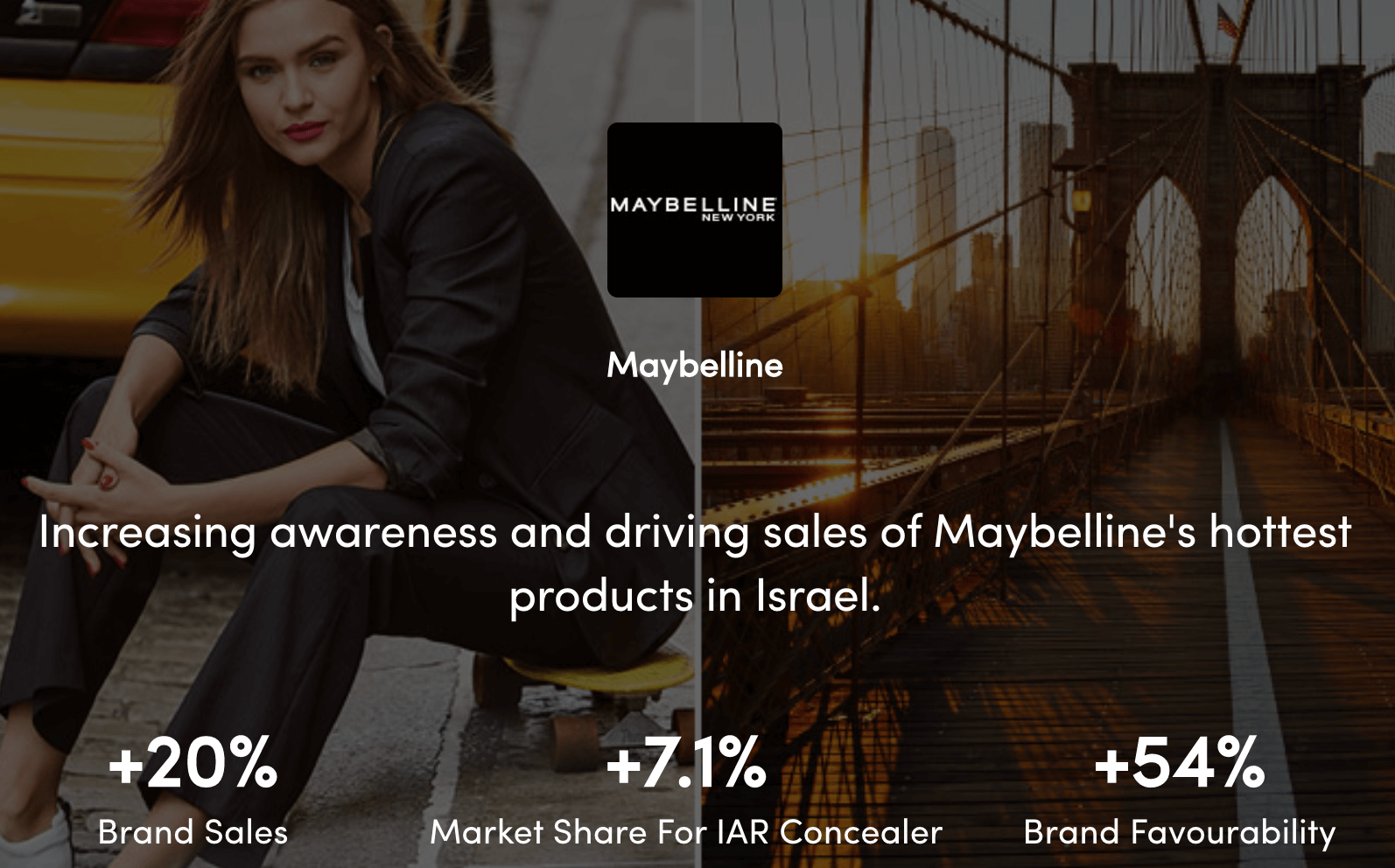October 26, 2023
Comme des millions de personnes, vous avez peut-être regardé la vidéo de la recette du bol de riz au saumon #salmonricebowl sur TikTok, et acheté des algues Itsu pour la reproduire à la maison. Ou alors, peut-être avez-vous acheté un pot de gelée de pétrole originale Vaseline après avoir regardé des vidéos sur la tendance beauté du #slugging ?
Si c'est le cas, vous incarnez la tendance #TikTokMadeMeBuyIt (ce que TikTok m'a fait acheter), et vous démontrez également le pouvoir marketing du commerce communautaire.

Le commerce communautaire consiste à publier des contenus divertissants sur des plates-formes comme TikTok au sujet de produits, et qui créent un lien entre les utilisateurs et les marques. Des milliers de marques bénéficient déjà du commerce communautaire. Alors pourquoi pas vous ?
Les Tiktokeurs ont passé en moyenne 40 minutes par jour sur la plate-forme en 2021, ce qui est largement suffisant pour découvrir des marques. Parmi les utilisateurs de TikTok, 43 % utilisent la plate-forme pour essayer de nouvelles choses, et 61 % apprécient davantage les marques qui créent des contenus ou participent aux tendances TikTok.
L'année dernière, les consommateurs ont dépensé 2,3 milliards de dollars sur TikTok. Alors, si vous n'avez pas encore saisi l'opportunité que représente le commerce communautaire, voici une présentation de cette tendance et des raisons pour lesquelles vous devriez l'intégrer à votre stratégie marketing, ainsi que la manière de le faire.
Qu'est-ce que le commerce communautaire ?
Le shopping a toujours été un événement social et communautaire. Toutefois, il ne s'agit plus de se rendre au centre commercial ou dans le centre-ville avec des amis. Le shopping s'est transformé en phénomène des réseaux sociaux, où des milliards d'internautes se rencontrent et forment des communautés virtuelles sur TikTok et d'autres plates-formes.
Le commerce communautaire est une extension du social commerce, qui consiste tout simplement à vendre des produits et services sur les réseaux sociaux. TikTok définit le commerce communautaire comme « le marketing de bouche-à-oreille dirigé par les créateurs ». Il se caractérise par des contenus divertissants et captivants qui mettent en avant des produits ou des marques.
Le commerce communautaire vous offre une occasion unique de vous rapprocher des consommateurs en exploitant les créateurs de contenus et leurs communautés. Vous pourriez toucher un vaste réseau d'utilisateurs à la recherche de nouvelles expériences tout en restant authentique.
L'essor du commerce communautaire est lié à l'évolution des habitudes d'achat due à la pandémie. Comme les expériences d'achat en personne étaient alors impossibles, les achats en ligne ont considérablement augmenté : 85 % des consommateurs achètent des produits qu'ils ont vus sur les réseaux sociaux.
Les shoppers ont adopté d'autres tendances qui favorisent un parcours d'achat plus rapide, notamment l'achat en ligne avec retrait en magasin (BOPIS), la livraison des courses le jour même, et l'achat via les vidéos en direct sur les réseaux sociaux.
5 stratégies de commerce communautaire
Les réseaux sociaux sont une véritable source d'inspiration pour les consommateurs qui souhaitent découvrir de nouveaux produits. La communauté des réseaux sociaux fait connaître les produits, encourage l'achat, et augmente les taux de conversion. Et elle a généralement un effet rapide et instantané.66 % des utilisateurs de TikTok déclarent que la plate-forme les a incités à effectuer des achats, même lorsqu'ils n'en avaient pas l'intention.
Nous avons récemment interrogé 14 000 consommateurs dans le monde pour en savoir plus sur leurs habitudes d'achat à travers les réseaux sociaux. Pour toutes les principales plates-formes, les personnes interrogées ont déclaré utiliser les réseaux sociaux pour trouver l'inspiration.

La présence des marques sur les réseaux sociaux n'est donc plus suffisante. Vous devez interagir avec les consommateurs, créer des liens, et donner une bonne image à votre marque. C'est là que le commerce communautaire entre en jeu. Voici cinq façons de l'intégrer à votre stratégie.
1. Mettez votre authenticité en avant
Le commerce communautaire est plus efficace lorsque les marques et les consommateurs partagent un sentiment d'appartenance et un lien émotionnel. En associant l'esprit de communauté, le divertissement, le shopping et vos messages de marque, vous pouvez favoriser des découvertes authentiques et uniques de produits et influencer les achats des utilisateurs.
L'authenticité est un élément crucial du commerce communautaire. 56 % des utilisateurs de TikTok et 67 % des créateurs de contenus déclarent se sentir plus proches des marques qui publient des contenus simples et authentiques.
Sur Instagram, vous pouvez ajouter des filtres à vos photos pour attirer l'attention, mais cela ne fonctionne pas sur TikTok. Le commerce communautaire doit refléter la réalité. C'est l'occasion pour votre marque de rester authentique, qu'elle ait une image loufoque, enjouée ou vulnérable.
2. Le divertissement encourage l'action
Sur des plates-formes comme TikTok, les utilisateurs ne veulent pas voir de la publicité. Ils recherchent plutôt des expériences uniques, amusantes et divertissantes. Cela peut être un jeu, une danse amusante, un concours ou un défi insolite ; donnez libre cours à votre créativité, quelle que soit la tendance.
Les consommateurs recherchent de nouveaux contenus vivants, peu importe s'ils contiennent des produits ou présentent des marques. C'est toute la beauté du commerce communautaire.
Plus de 30 % des consommateurs souhaitent vivre une expérience d'achat divertissante. Aujourd'hui, 34 % des consommateurs recherchent également des contenus plus positifs et inspirants. Ils veulent découvrir de nouvelles marques ou de nouveaux produits tout en passant un bon moment.
Ocean Spray, une marque fondée il y a 90 ans, a vu ses ventes monter en flèche grâce à une vidéo devenue virale sur TikTok en 2020. On y voyait un homme qui chantait en play-back la chanson « Dreams » de Fleetwood Mac sur un longboard tout en buvant le jus de cranberry de la marque.
Plus votre contenu est divertissant, plus vous avez l'air authentique. Vous ferez alors parler de vous, ce qui vous permettra de vous faire connaître et de faire découvrir vos produits, et ainsi encourager l'achat et renforcer l'engagement des consommateurs.
3. Tirez profit des contenus générés par les créateurs et les utilisateurs
Nous sommes à l'aube de l'ère de l'économie des créateurs. Face à l'ascension de TikTok, la meilleure façon d'atteindre les consommateurs est de collaborer avec des créateurs et des influenceurs déjà connus sur la plate-forme.
66 % des Tiktokeurs apprécient lorsque les marques sponsorisent des créateurs pour mettre en avant leurs produits. En outre, environ 70 % des utilisateurs de TikTok estiment que les communautés de la plate-forme sont suffisamment puissantes pour faire évoluer les mentalités. Travailler avec des influenceurs améliorera l'image de votre marque et vous aidera à établir des liens avec vos consommateurs.
Laissez les adeptes de votre marque devenir vos créateurs. Encourager les contenus générés par les utilisateurs (UGC), tels que les vidéos de consommateurs qui essaient vos produits, renforce l'authenticité. Les consommateurs aiment donner libre cours à leur créativité et interagir avec leurs marques préférées.
Cette approche vous aidera à former de nouvelles communautés. Encouragez tout le monde à utiliser des hashtags liés à votre marque et à votre secteur, comme #beauté ou #mode.
Vous pouvez créer rapidement des contenus de commerce communautaire. TikTok est une application conçue pour faciliter la création de contenus et la génération de revenus, et les vidéos peuvent être postées en quelques minutes.
4. Facilitez l'achat de vos produits à travers les contenus
Les consommateurs découvrent de nouveaux produits et de nouvelles marques tout en regardant des vidéos amusantes de danse ou de défis insolites. D'après notre Shopper Experience Index 2022 :
- 52 % des consommateurs ont effectué un achat sur les réseaux sociaux avant 2021
- 54 % déclarent qu'ils seraient plus susceptibles d'acheter un produit sur les réseaux sociaux s'ils pouvaient cliquer sur la publication et obtenir des informations sur le produit directement sur la plate-forme
C'est l'esprit qui caractérise le commerce communautaire, et la raison pour laquelle #TikTokMadeMeBuyIt a généré 12 milliards de vues.
Il est donc essentiel de faciliter l'achat de vos produits à travers les contenus de commerce communautaire pour augmenter le taux de conversion.
TikTok, par exemple, permet aux marques de lier leurs catalogues de produits Shopify, qui s'affichent dans l'onglet Shopping de votre profil. D'autres plates-formes de commerce électronique, telles que Square et OpenCart, seront bientôt intégrées. Vous pouvez également ajouter des liens vers des vidéos qui présentent vos articles.
Les marques qui ont commencé tôt à utiliser TikTok ont observé des résultats impressionnants. La marque Glow Beauty a enregistré une augmentation de 600 % de ses ventes grâce à une publication TikTok devenue virale et à un afflux de nouveaux visiteurs provenant de la plate-forme lorsqu'elle a rejoint la version bêta de TikTok Shop.
5. Organisez des événements diffusés en direct
La diffusion en direct est un autre moyen de créer des contenus de commerce communautaire authentiques et divertissants sur TikTok. 82 % des consommateurs pensent que la diffusion en direct facilite l'achat de produits, et 70 % préfèrent cette manière d'acheter des produits sur les réseaux sociaux par rapport à d'autres.
L'utilisation d'événements diffusés en direct favorise la découverte des produits et les actions immédiates, ce qui stimule les ventes. Walmart, par exemple, a vu son nombre d'abonnés augmenter de 25 % après avoir organisé un événement de shopping en direct, avec un nombre de spectateurs sept fois plus élevé que prévu. Ce succès a incité le détaillant à organiser davantage d'événements de shopping en direct.
Exemples d'utilisation du commerce communautaire
Les marques exploitent le commerce communautaire, ce qui leur permet de rassembler les clients et de stimuler les ventes. Voici trois exemples de mise à profit du commerce communautaire.
1. Starbucks

Lorsque la communauté TikTok a commencé à publier des vidéos au sujet de leurs commandes Starbucks complexes préférées, la marque a sauté sur l'occasion. Starbucks a lancé des boissons en édition limitée, notamment le Strawberry Sunset et le Churro Frappuccino, inspirés par TikTok.
L'entreprise a ensuite utilisé la fonctionnalité Spark Ads de TikTok pour promouvoir des vidéos de créateurs qui mettent en avant les boissons afin d'attiser la curiosité. Cette campagne a généré :
- 31 500 nouveaux abonnements au compte de Starbucks
- 11,5 millions d'impressions
- 220 000 « J'aime »
2. Maybelline

Dans le but d'améliorer son image de marque et son lien émotionnel avec les consommateurs de la génération Z, Maybelline a collaboré avec la créatrice de contenus beauté sur TikTok @jessicaeid._ et d'autres influenceurs pour promouvoir son mascara Lash Sensational Sky High et d'autres produits.
La campagne a généré dans l'ensemble :
- 20 millions d'impressions
- 553 000 engagements
- Une augmentation de 20 % des ventes
De plus, son mascara a fait le buzz, et a enregistré une augmentation de 49 % des ventes au cours de la semaine de la campagne, ainsi qu'une augmentation de 190 % en un mois. Le mascara s'est également retrouvé en rupture de stock quatre fois sur le site Web Ulta Beauty.
3. American Eagle

La marque de vêtements American Eagle s'est associée à la star de TikTok Addison Rae pour créer le défi de rentrée scolaire avec le hashtag de marque #InMyAEJeans en 2020. La campagne consistait à demander aux utilisateurs de TikTok de réaliser une vidéo avec la chanson d'American Eagle en portant leur jean préféré de la marque.
Ils devaient utiliser le hashtag #InMyAEJeans pour avoir une chance de figurer dans un duo avec Addison Rae. Grâce à la campagne, American Eagle a généré :
- 800 000 vidéos réalisées par 432 000 Tiktokeurs
- 7 milliards de vues sur la campagne
Dans une autre campagne, les leggings de la collection OFFLINE by Aerie d'American Eagle se sont retrouvés en rupture de stock plusieurs fois après la publication d'une vidéo de l'influenceuse TikTok @hannahschlenker à ses plus de 800 000 abonnés. La vidéo est devenue virale, et a reçu près de 900 000 « J'aime ».
Les avantages du commerce communautaire
Les réseaux sociaux offrent l'opportunité de toucher des milliards d'utilisateurs et un nombre infini de communautés. Pour susciter l'intérêt de ces consommateurs, il est nécessaire de créer des contenus amusants et divertissants qui présentent vos produits de manière authentique et pertinente.
Les marques bénéficient déjà du commerce communautaire sur TikTok. Ces stratégies peuvent vous aider à lancer votre propre stratégie de commerce communautaire, afin d'établir des liens émotionnels avec les consommateurs qui les incitent à découvrir votre marque et à acheter vos produits.
Découvrez les avantages du social commerce avec ces 10 exemples de marques. Ou pour ceux qui s'y connaissent déjà, consultez notre article ci-dessous pour savoir comment augmenter votre taux de conversion issu du social commerce.





